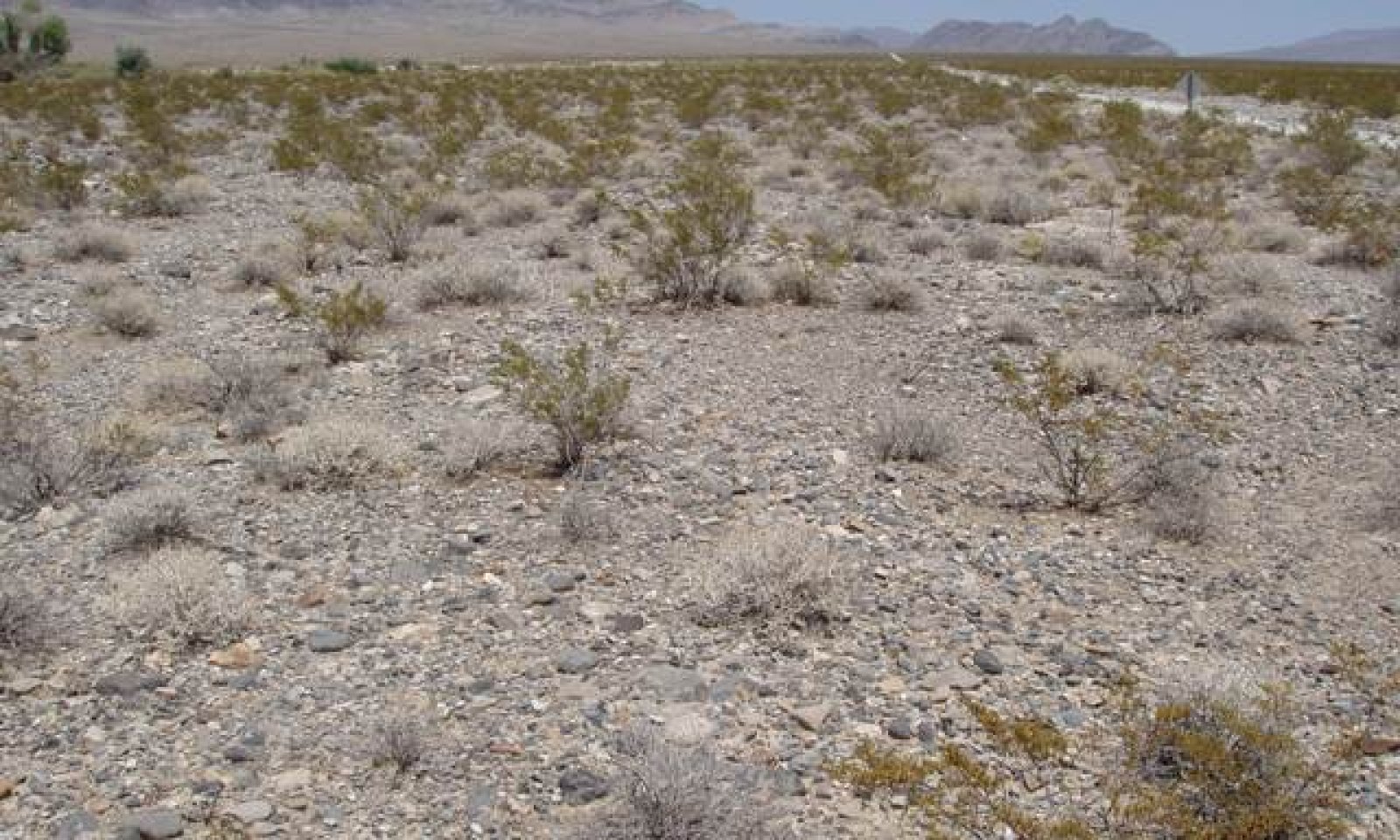
Arid Active Alluvial Fans
Scenario model
Current ecosystem state
Select a state
Management practices/drivers
Select a transition or restoration pathway
- Transition T1 More details
- Transition T2 More details
-
No transition or restoration pathway between the selected states has been described
Target ecosystem state
Select a state
Description
The reference state is representative of the natural range of variability under pristine conditions. Community phase changes are primarily driven by changes in weather patterns and natural disturbances such as long-term drought and insect attacks. Wildfire is infrequent and patchy due to low fuel loading and widely spaced shrubs. Timing of disturbance combined with weather events determines plant community dynamics. The reference state has two community phases; one community phase dominated by mature shrubs and sparse herbaceous vegetation, the other community phase is dominated by native herbaceous vegetation with a recovering shrub component.
Submodel
Description
The invaded state is characterized by the presence of non-native species. Compositionally, State 2 is similar to the reference state with a trace of non-natives in the understory. However, ecological resistance and resilience is reduced by the presence on non-native species, making it more difficult for this state to recover following a disturbance. Non-native annuals are highly flammable and promote wildfire where fires historically have been infrequent. State 2 has three community phases. One phase is similar to the reference community phase with a trace of non-natives in the understory. The second community phase is dominated by herbaceous vegetation, native and non-native. The last community phase has reduced perennial native vegetation and stable to increasing non-natives.
Submodel
Description
The non-native annual state is characterized by a significant reduction or loss of deep-rooted native perennials and a frequent disturbance return interval. Frequent and repeated disturbances, including wildfire favors the establishment of a non-native annual dominated state. Non-native annuals perform well under a frequent disturbance return interval due to their annual growth form, persistent seed bank and competitive ability. State 3 has two general community phases. One community phase is indicative of a post-fire community and is dominated by non-native annuals. The second community phase is characterized by the recovery of short-lived, native, woody perennials, such as white bursage, shadscale (ATCO) and brittlebush species.
Submodel
Mechanism
Trigger: Introduction of non-native species
Slow variables: Surface disturbance, changes in the kinds of animals and their grazing patterns, drought and/or changes in fire history that altered the recruitment rate of native species.
Threshold: Non-native species cannot be easily removed from the system and have the potential to significantly alter disturbance regimes from their historic range of variation. Changes in the herbaceous understory, associated with the introduction of non-native annuals, reduce ecological resistance and resilience following a disturbance.
Mechanism
Trigger: Frequent and repeated wildfire
Slow variables: Increased reproduction and cover of non-native invasive annuals.
Threshold: Reduction in the deep-rooted perennial native herbaceous understory and severe reduction or loss of native shrubs leads to changes in soil hydrology; reducing infiltration and increasing runoff. Modified fire regime; including changes in the frequency, intensity, size and spatial variability of fires.
Model keys
Briefcase
Add ecological sites and Major Land Resource Areas to your briefcase by clicking on the briefcase (![]() ) icon wherever it occurs. Drag and drop items to reorder. Cookies are used to store briefcase items between browsing sessions. Because of this, the number of items that can be added to your briefcase is limited, and briefcase items added on one device and browser cannot be accessed from another device or browser. Users who do not wish to place cookies on their devices should not use the briefcase tool. Briefcase cookies serve no other purpose than described here and are deleted whenever browsing history is cleared.
) icon wherever it occurs. Drag and drop items to reorder. Cookies are used to store briefcase items between browsing sessions. Because of this, the number of items that can be added to your briefcase is limited, and briefcase items added on one device and browser cannot be accessed from another device or browser. Users who do not wish to place cookies on their devices should not use the briefcase tool. Briefcase cookies serve no other purpose than described here and are deleted whenever browsing history is cleared.
Ecological sites
Major Land Resource Areas
The Ecosystem Dynamics Interpretive Tool is an information system framework developed by the USDA-ARS Jornada Experimental Range, USDA Natural Resources Conservation Service, and New Mexico State University.


